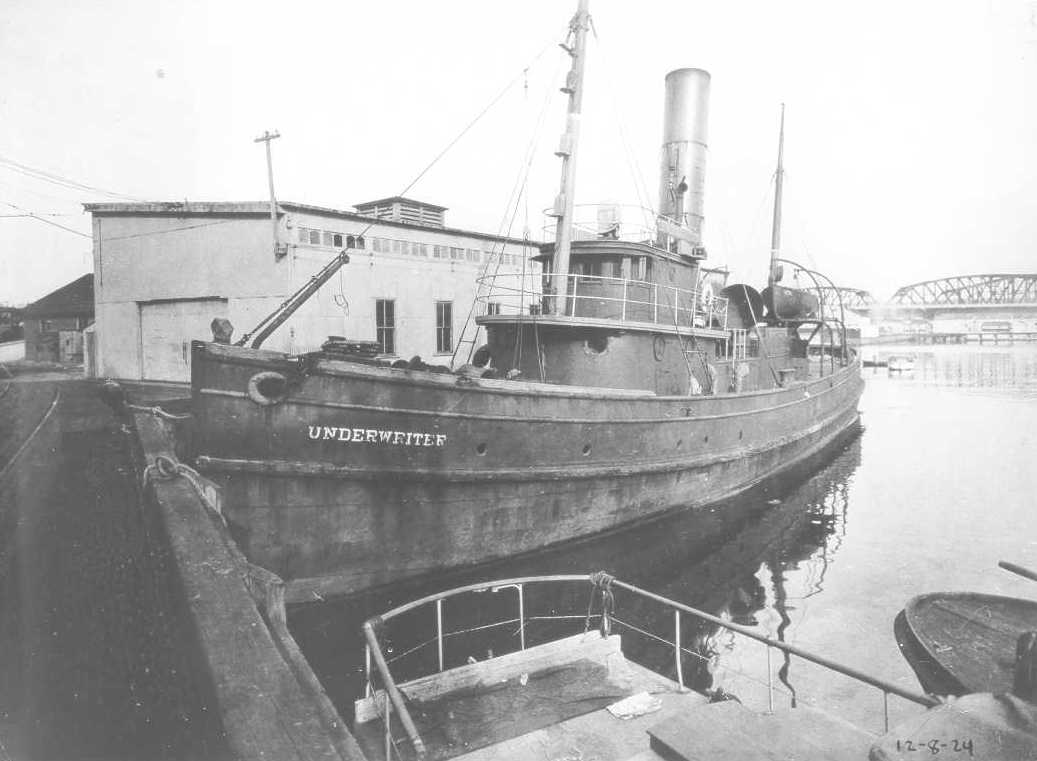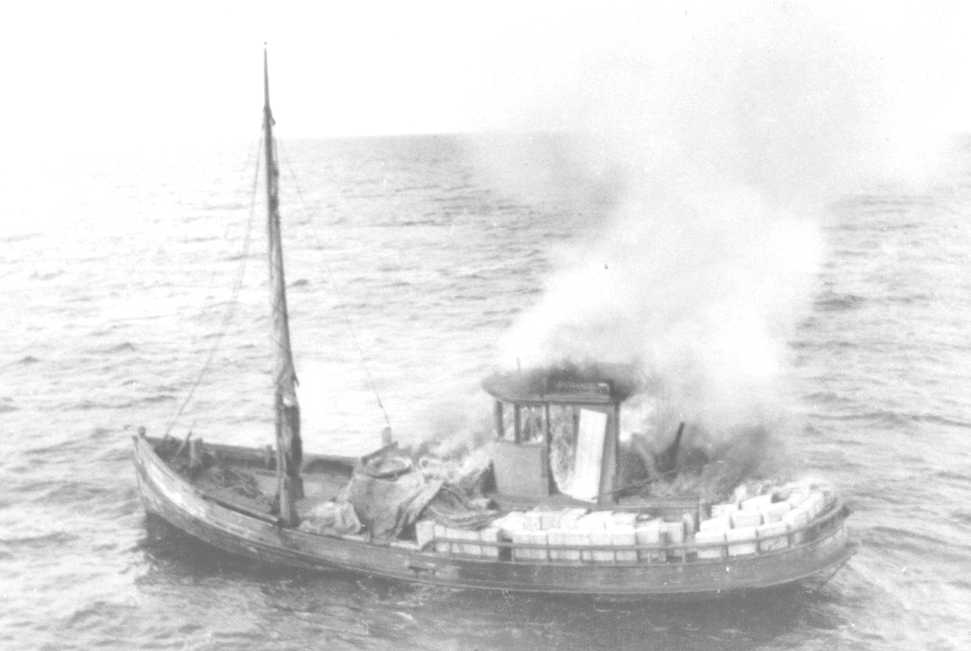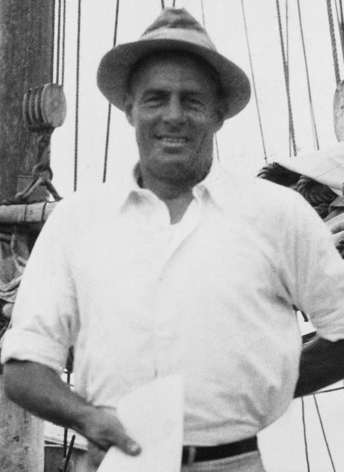Rumrunners Delivered the Good Stuff to America’s Speakeasies
Scroll to read more



Rumrunners Delivered the Good Stuff to America’s Speakeasies
Rum running, the organized smuggling of imported whiskey, rum and other liquor by sea and over land to the United States, started within weeks after Prohibition took effect on January 17, 1920. People still wanting to wet their whistles in illegal speakeasies and at home were rejecting foul-tasting and dangerous locally made industrial alcohol being passed off as the real thing. They were demanding quality, authentic Scotch and other liquor “right off the boat.” Among the customers for imported booze from Europe, Canada and the Caribbean were the nation’s bootleggers who ran and supplied thousands of speakeasies. Tops among them were Big Bill Dwyer (dubbed “King of the Bootleggers” by the press) and Mob bosses Charles “Lucky” Luciano in New York and Al Capone in Chicago.
Shipments of whiskey from Great Britain traveled to Nassau in the Bahamas and elsewhere in the Caribbean for illicit importation to America’s East Coast and New Orleans. Whiskey distilled in Canada was smuggled by ship or across land to the West Coast from British Columbia, to the Midwest from Saskatchewan and Ontario, and to the East from Nova Scotia and the French island of St. Pierre, a liquor smuggler’s hotspot off Newfoundland. Loads of rum from the Caribbean, imported champagne and other alcohol also made it ashore. Soon, captains of boats loaded with liquor bottles in false bottoms beneath fish bins anchored offshore at designated areas and waited for “contact boats,” small high-speed crafts with buyers who tossed aboard a bundle of large-denomination bills bound by elastic bands, loaded their liquor orders onto their boats and sped to shore to load it onto trucks headed for New York, Boston and other cities. One such stretch of ocean for liquor-selling boats, famously called “Rum Row,” ran from New York to Atlantic City, 12 miles out in international waters to avoid the U.S. Coast Guard.
The “golden years” of rum running were the early 1920s — before Bureau of Prohibition agents, local police and the Coast Guard knew just what liquor smugglers were up to. On the Detroit River, Detroit’s vicious Purple Gang used speed boats to run liquor into town from Windsor, Ontario. They also hijacked the loads their competitors. One infamous Western rumrunner was Roy Olmstead, who shipped Canadian whiskey from a distillery in Victoria in southwestern Canada down the Haro Strait, stashing it on D’Arcy Island on its way to Seattle. Olmstead was making $200,000 a month before Prohibition agents tapped his phone, leading to his arrest and end as a rumrunner in 1924.
Individual bootleggers transporting booze by land to Seattle would hide it in automobiles under false floorboards with felt padding or in fake gas tanks. Sometimes whiskey was literally mixed with the air in the tubes of tires. To fool authorities at the border, a smuggler might have a woman and child inside his car with hidden liquor or even stow it inside a school bus transporting children.
Out at sea or on the Great Lakes, rumrunners in wind-sailed schooners or motor boats contended with the Coast Guard, rough weather and frozen water. Even worse were the “go-through guys,” hoodlums armed with pistols and Thompson machines guns in speed boats who hijacked the ships, stole cargos and cash and at times killed rumrunners’ crews and sank their ships.
The fast-moving rumrunners frustrated the Coast Guard so much by 1923 that Commandant William E. Reynolds asked the federal government for 200 more cruisers and 90 speed boats for patrols to catch up with the contact boats. The agency would add 36 World War I naval ships to enforce Prohibition and employ 11,000 officers and crew.
Another famous rumrunner was William “Bill” McCoy on the East Coast. McCoy, an enterprising former merchant sailor, had lost his Jacksonville, Florida, motorboat transport business to onshore buses in early 1920 when a well-healed gentleman offered him the chance to smuggle liquor. McCoy agreed and soon became one of the earliest and most successful rumrunners. The quality of the name-brand Scotch and whiskey he provided was so revered that bootleggers on Rum Row used the term “the real McCoy” to describe good liquor.
McCoy started hauling Great Britain-made liquor from Nassau harbor in the Bahamas to the East Coast, then, with the heat on, moved for a time up north to St. Pierre Island. He could store 5,000 cases of liquor on his schooner the Arethusa. The “cases” were unique – not wooden ones but far-lighter, consisting of six paper-covered bottles stacked in a pyramid, covered in straw and tied into a burlap sack. McCoy installed a machine gun on the deck of the Arethusa; in case he had to deal with go-through guys. One of his fellow booze smugglers was Gertrude Lythgoe, known as the “Queen of the Bootleggers” in Nassau.
While floating at sea on Rum Row, boats like McCoy’s would post handwritten signs on the riggings, showing the names of their liquors and prices. McCoy’s customers, up to 15 at a time, drove their contact boats up to his schooner, keeping their motors running while buying cases of his products such as Johnny Walker and Dewer’s. He was popular for his fair prices, offers of free samples and a free case per order to paying customers.
McCoy’s time as the brash, romantic rumrunner, however, came to an end in 1923, when a Coast Guard cutter spotted his flagship schooner, renamed the Tomoka, on Rum Row about six miles off the coast of New Jersey. McCoy ordered his crew to sail away, but he surrendered after the Coast Guard fired a six-pound cannon shell at his vessel. In the mid-1920s, he pleaded guilty to smuggling, served nine months in jail and later moved to Florida where he and his brother Ben started a business building ships.
Rum running became much more difficult after the Coast Guard obtained fast “six-bitter” patrol boats and by 1926 could block the contact boats from making it ashore, forcing many runners to dump their liquor into the ocean to avoid arrest. Rum Row was pushed farther out, making it difficult to make a profit. In 1927, the U.S. Supreme Court ruled that American-flagged ships with illegal liquor could be seized up to 34 miles from shore.
Meanwhile, Olmstead was serving a four-year prison sentence for bootlegging. Three leaders of the Purple Gang were sentenced to life without parole on illegal weapons charges in 1930. Capone got 11 years in prison for tax evasion in 1931. And when Prohibition ended on December 5, 1933, McCoy’s old customers no longer needed a bootlegger’s help to buy a good bottle of Scotch.
Next Story: During Prohibition, Mob Bosses Tripped Up By Tax Laws